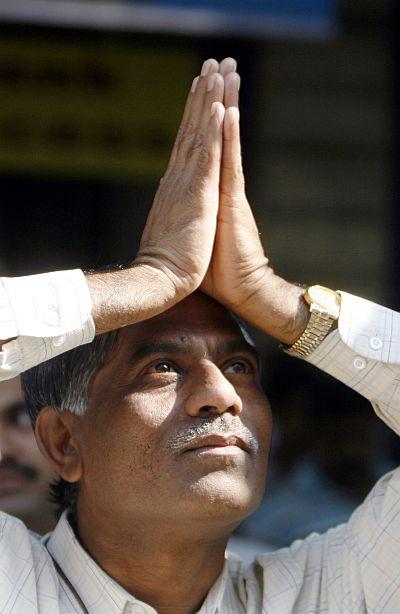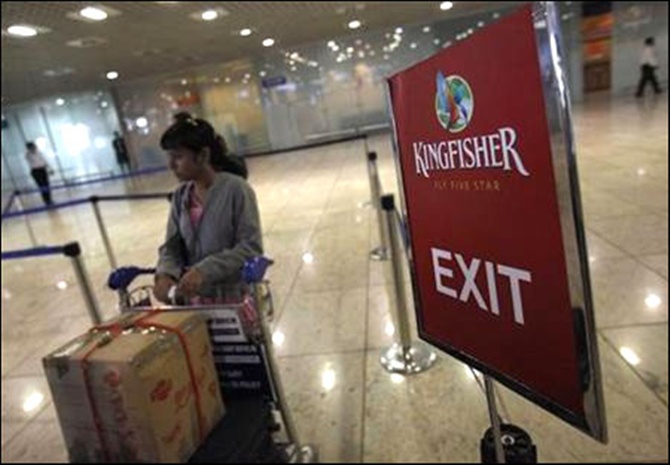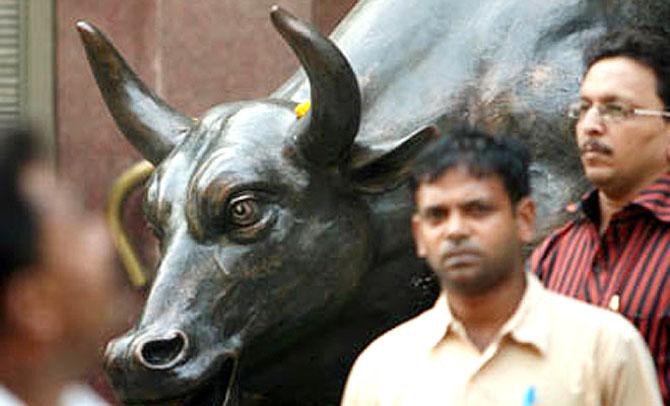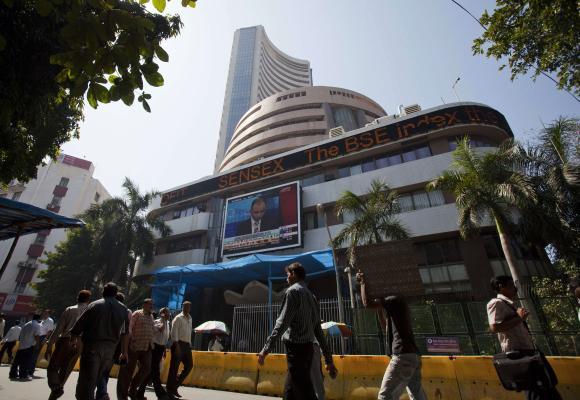 | « Back to article | Print this article |
Is market's love affair with the BJP justified?
Akash Prakash argues the changes needed to revive growth will happen, whether the BJP or anyone else comes to power in 2014.
As soon as the Assembly election results were declared – with the Bharatiya Janata Party (BJP) sweeping Rajasthan and Madhya Pradesh and winning narrowly in Chhattisgarh – the markets, already in a good mood in anticipation of a BJP victory, saw sentiment and enthusiasm go to almost giddy levels.
Most market players began extrapolating from these results to conclude that the BJP-led National Democratic Alliance (NDA) would get more than 225 seats, form the next government and that India was on the cusp of a new bull market.
For a short while, everyone forgot about the taper, emerging market underperformance, rising bond yields in the United States and so on.
However, during the past week, market participants have become far more cautious.
There is a growing worry that the Aam Aadmi Party (AAP), now clearly credible after forming the government in Delhi, will contest the Lok Sabha elections and eat into the BJP’s vote share.
Click NEXT to read more...
Is market's love affair with the BJP justified?
If the AAP gets even 20 seats, that could prove fatal to the NDA alliance’s chances. If one does the arithmetic in a dispassionate manner, it also becomes clear that 225 seats for the NDA are by no means a sure thing. There is fear that we could get stuck in a real mishmash after the elections.
The market seems to be acting as though there is no alternative to the NDA. Market experts openly talk of a minimum 15 to 20 per cent fall in the Nifty if we get a non-NDA government.
The market’s love affair with the BJP is clear; it is tired of the insipid leadership, lack of cohesion and populism of the United Progressive Alliance (UPA). The market feels that the BJP is far more pro-business.
How rational is this thinking? Are we truly doomed with a non-NDA government? Can the market’s hopes rest on a single outcome or an individual?
Click NEXT to read more...
Is market's love affair with the BJP justified?
Though Narendra Modi is clearly bullish for the markets and the economy, are our markets/economy doomed to stagnation in his absence?
The major issues facing the economy today – whether it is the need to revive the private sector investment cycle, bring food inflation under control or cut unproductive subsidies – are all challenges that will take time to resolve. No political formation can bring about policy change and lasting improvement overnight. I would like to argue that the steps needed to bring about an improvement in each of these areas have already been set in motion.
Take the revival of the private sector investment cycle. We have to first improve both business confidence and the business environment. This would require process improvement in the entire system of approvals, without retrospective amendments. It would also require the government to deliver on its commitments.
However, even more important is the need to de-leverage the balance sheets of most project developers. Unless they can cut debt and improve cash flows, no investment will happen - no matter how much the ease of doing business in India improves.
The only way that this balance sheet and cash flow improvement can happen is through asset sales, as viable and ready projects get out to strategic buyers.
Click NEXT to read more...
Is market's love affair with the BJP justified?
Signs of this are already visible - observe what GMR is doing across multiple assets; what Jaiprakash Associates is doing for its cement and hydro-power assets; and what numerous small power developers are doing.
This process has to be spurred on by banks, driven by their need to avoid credit losses and write-offs. There is a noticeable change in approach among both banks and the Reserve Bank of India (RBI).
The days of promoters having a free lunch are over. The banks finally seem to be willing to force the issue and utilise the power they have always had — take, for instance, the Kingfisher saga.
This balance sheet repair has been set in motion and will continue irrespective of which government is in power.
Even on the business environment front, the move to transparency and revenue share in all resource allocation decisions is now well established. Attempts to unclog existing projects are also well under way.
Irrespective of which government comes to power, the policy paralysis, the lack of cohesion in decision making and a sense of chaos of the past few years are unlikely to be repeated.
Click NEXT to read more...
Is market's love affair with the BJP justified?
As far as food inflation is concerned, the issue has finally hurt the politicians and taken centre stage in their eyes. They will react, as the political costs of not solving this problem are too great.
Most of the steps here need to be taken at the state level, and we are already beginning to see chief ministers being prodded by their central leadership to bite the bullet in terms of amending the agricultural produce market committee (APMC) laws and cracking down on hoarding.
As we slowly clean up the supply chain, break the cartels and a production response kicks in, we will see a slow and gradual moderation in food prices. I would wager that we have seen the worst of food inflation. It may take time, but it will not remain in double digits.
Click NEXT to read more...
Is market's love affair with the BJP justified?
On the fiscal side, the die is cast. The sword of a rating downgrade is hanging over our head. Unless we bring the deficit down in a sustainable manner, we will slip into a junk sovereign rating.
The only way to satisfy rating agencies is to revive growth, bring in some revenue enhancers like the goods and services tax (GST), cut unproductive subsidies (petroleum and fertiliser) and improve the targeting of others (food).
We have no choice but to move in this direction, since a rating downgrade will create volatility in all asset prices - especially in the currency.
The other policy vigilante will be foreign investors. They have $250 billion invested in Indian equities; if they do not like the policy framework of the new government, they can vote with their feet.
If even $25 billion were to flow out, the equity and currency markets would have a significant downside. We have now reached a stage where whichever government comes to power, it needs to revive growth, cut the deficit, improve the business environment and ensure that the rating agencies and investors are on its side.
An electoral surprise may spook markets and create a significant downside.
Click NEXT to read more...
Is market's love affair with the BJP justified?
Instead of panicking at a 15 to 20 per cent drop, it should be considered a huge buying opportunity. The reality is that the government that comes to power would not have the flexibility to make dumb, confidence-sapping decisions.
Any missteps will have harsh financial market and eventual real economy consequences and, thus, will have to be modified. There is no free lunch left even for the political class. Having an economy bouncing around at five per cent is unacceptable.
The changes needed to revive growth will be made. These changes may come faster with a BJP government - but they will come, irrespective of who forms the government.
The writer is at Amansa Capital.







